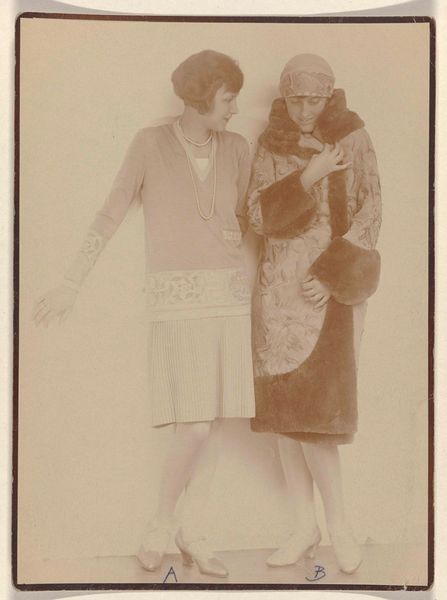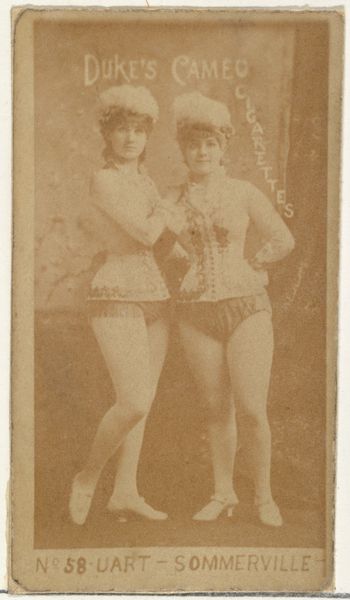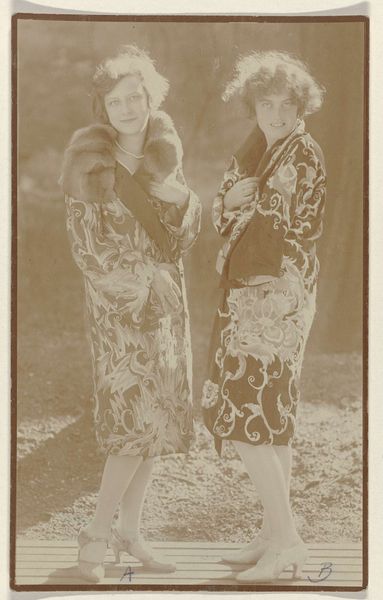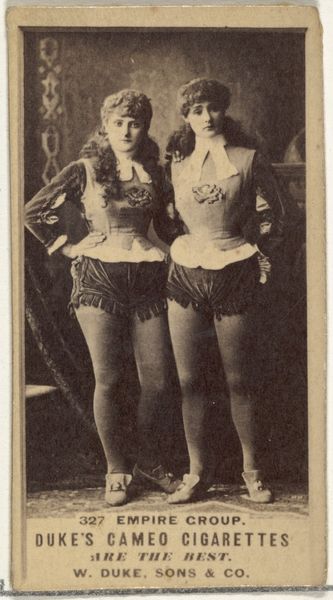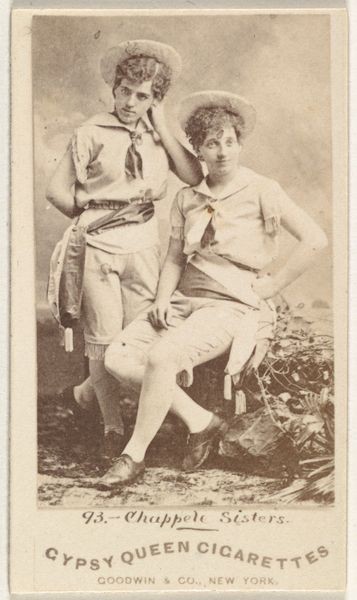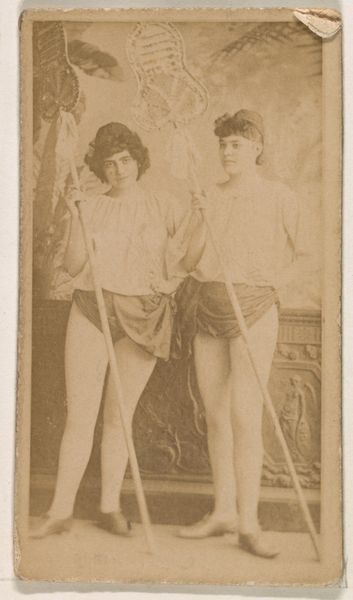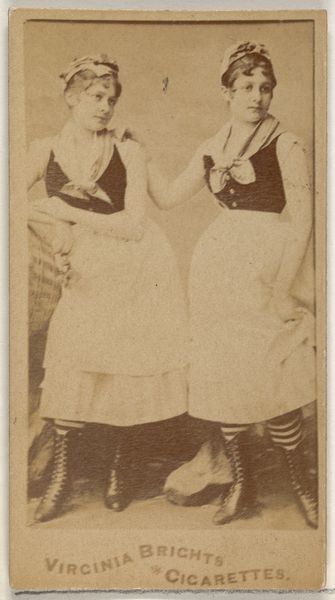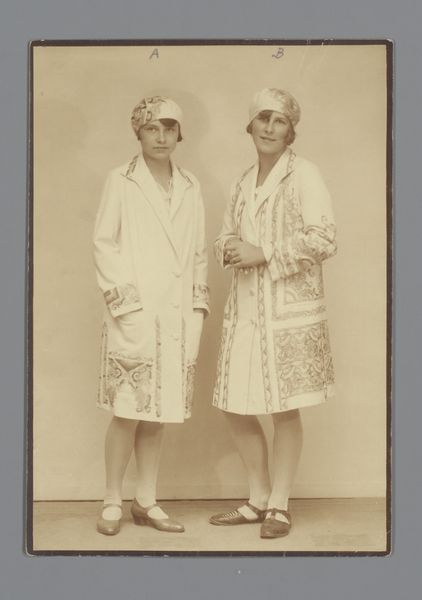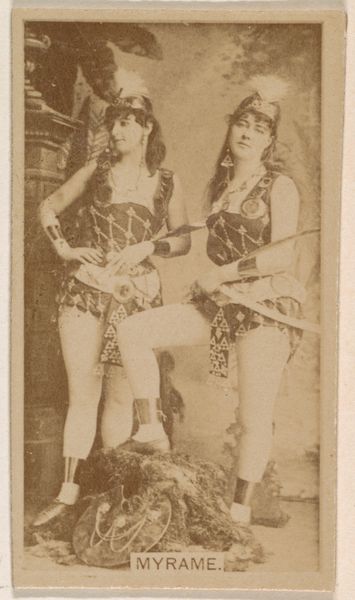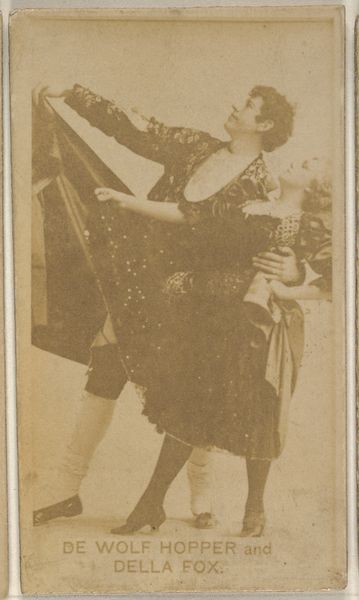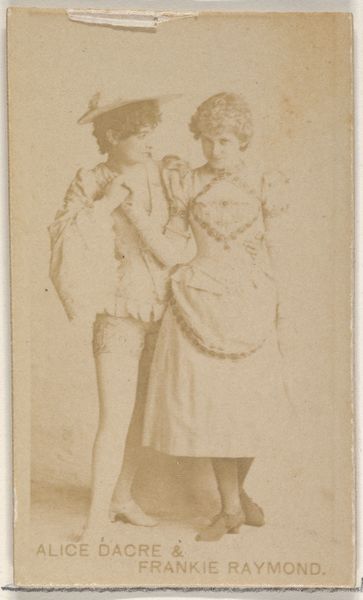
photography
#
portrait
#
art-deco
#
figuration
#
photography
Dimensions: height 147 mm, width 88 mm
Copyright: Rijks Museum: Open Domain
Curator: This gelatin silver print, attributed to the Wiener Werkstätte, is titled "Two Models in Bathing Suits" and was created sometime between 1920 and 1930. Editor: There's a peculiar lightness to it, almost dreamlike. The composition is quite simple; two figures dominate the space. And is it just me, or do they seem self-conscious? Curator: Perhaps, though I think the setting and the women’s attire need consideration within the context of shifting social mores in post-World War I Europe. Bathing suits represented not only freedom of movement but a visual articulation of women’s increasing agency and challenge to established patriarchal constructs. Editor: I can see that reading, though my eye is immediately drawn to the ornamentation, this vibrant dance of geometric forms that enlivens each bathing suit. Look closely—the angularity juxtaposed with the curvilinear feels incredibly intentional. It's such an obvious display of craft, which I find hard to ignore when considering Wiener Werkstätte. Curator: Indeed, the geometric designs connect to Art Deco aesthetics but may also subvert conventional portraiture norms by drawing the gaze away from individual identities and directing it towards industrialized artistry and feminine collaboration. Editor: But does it really, though? The eye is constantly brought back to these two women, their expressions, the almost classical positioning of their limbs… These stylistic touches are so cleverly implemented to suggest a controlled vitality within a limited structure. Curator: Possibly, or the constraints could be a subtle manifestation of society’s perception of femininity during the interwar years: ornamental, pleasurable to look at, while nonetheless restricted and judged according to modernizing codes. Editor: I will grant you that it’s probably a carefully conceived dialogue between restraint and liberty, that even the surface is indicative of underlying conflict and tension. Curator: That friction is where the beauty, but also the discomfort, lies, and where we can continue this discussion to expand into more urgent, wider understandings of how women present their identity. Editor: Yes, through examining this piece, we each revealed more depth within our thinking. I noticed an exciting complexity.
Comments
No comments
Be the first to comment and join the conversation on the ultimate creative platform.
